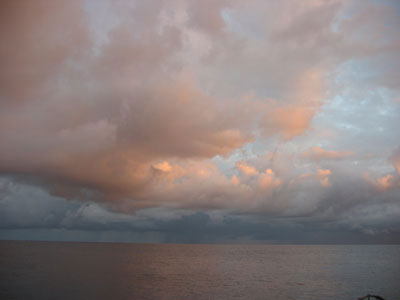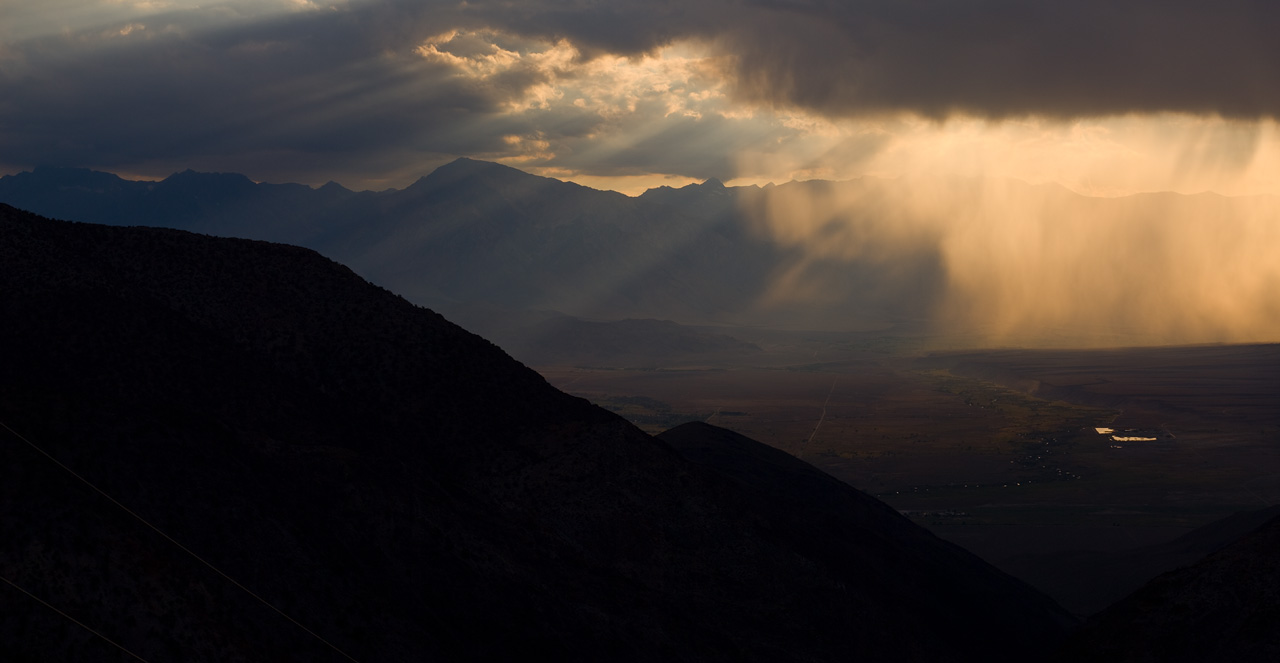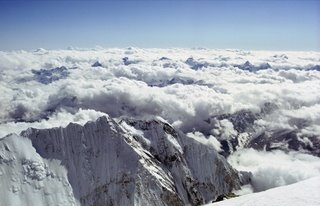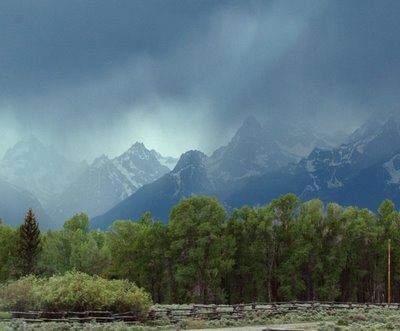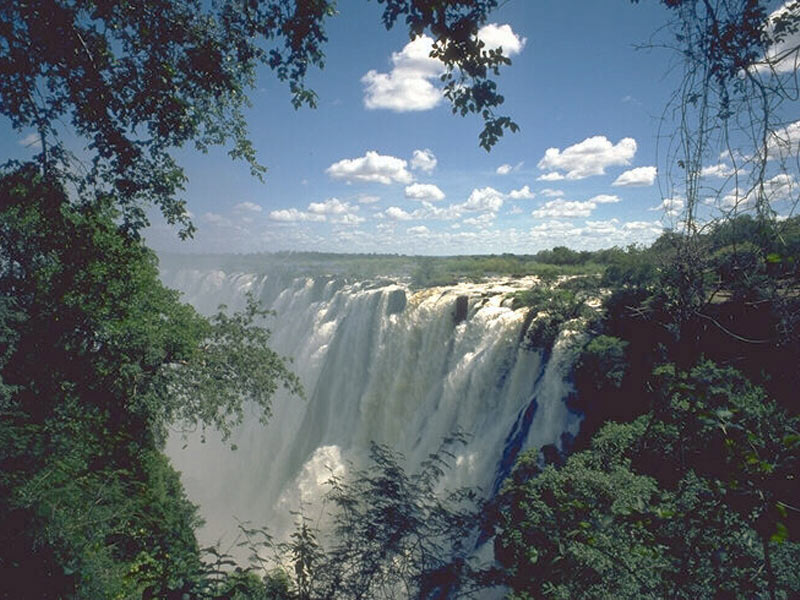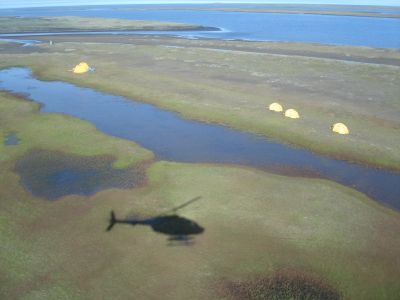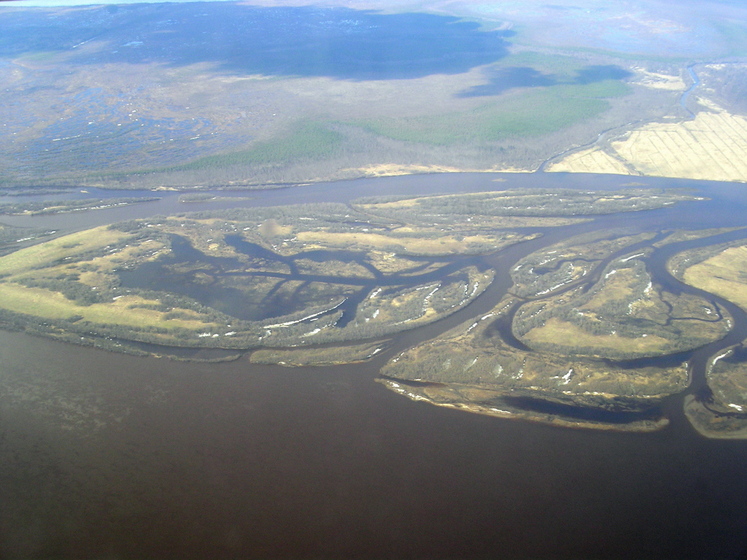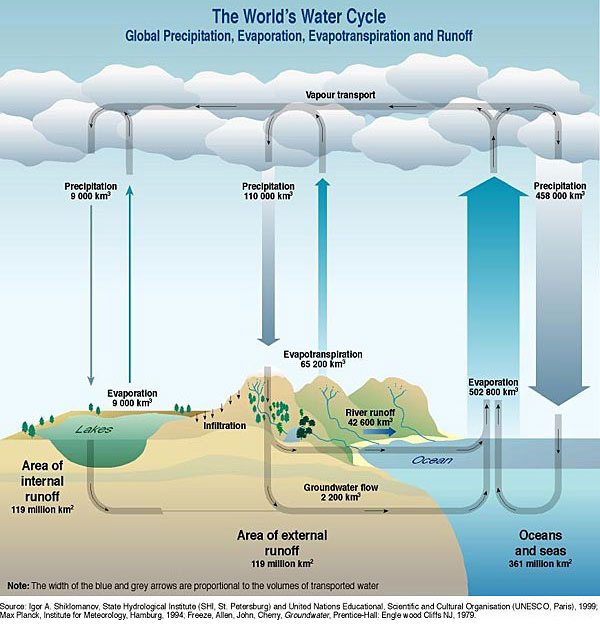Background: The Water Cycle
The Oceans, Seas & Lakes
Over the millenia, a huge amount of water has collected on the surface of the earth. Water, of course, sinks to the lowest level, and has thus filled the deepest valleys, creating the Oceans, Seas and Lakes. The Sea Level is such an prominent feature of the earth that we have come to use it as the standard measurement of altitude, speaking of valleys and mountains in relation to Sea Level. While most of the Earth's water is contained in the oceans, the natural water cycle moves water up into the atmosphere and down upon all parts of the earth, moistening the entire planet and making it suitable for living things.
Evaporation, Condensation & Precipitation
Solar radiation causes water to evaporate from the oceans, lakes and rivers and forests up into the atmosphere as water vapour.
In the air, water vapour cools and condenses, forming clouds.
Droplets form in clouds and fall from the atmosphere as precipitation (rain or snow).
About three quarters of the rain which falls back to Earth lands in the oceans again.
Over the continents, rainfall and melted snow soaks into the ground, flowing into aquifers, and the water table, and running into streams and rivers, which eventually flow into lakes and usually back to the sea.
The water runs slowly downhill, seeping into the ground or being taken up by plants and animals.
Mountains, Snow, Glaciers & Polar Icecaps
Precipitation that falls as snow onto mountain tops or at the polar regions collects as icecaps and glaciers. These ice sheets and glaciers store a great amount of fresh water. Most frozen water on earth is locked up in glaciers and icebergs and can take several thousands of years to complete its cycle.
Plants & Forest Transpiration
All over the world, forest plants form a huge porous green sponge that holds moisture in the local atmosphere. Between the ground and the canopy, there is a huge amount of water suspended in living plants and animals, mist, fog, dew, drippy water, puddles, pools and natural cisterns. The forest layer is much thicker than a simple grass lawn or field of corn or wheat, and can hold much greater amounts of water for the use of plants and animals. A certain amount of moisture is also released from trees and plants as transpiration. In addition to plants, all animals bodies consist mostly of water. Our blood has the same salinity as sea water.
Summary
Our world has, as a natural part of the atmosphere, a moist climate which is very healthy for plants and animals. In the arid areas of the world, there is a relative scarcity of plants and animals. Remember, the water we use is recycled over and over again, naturally.
